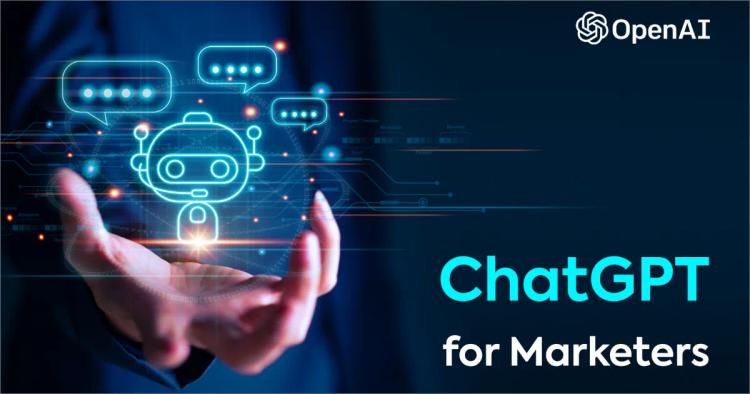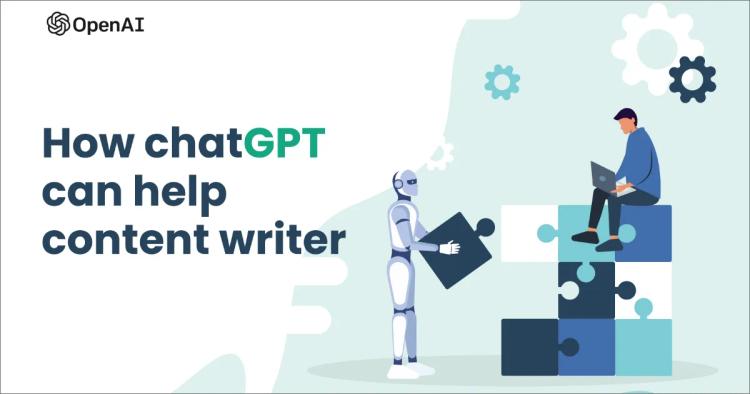Generative AI is a marvel of modern technology, bringing machines capable of creative thought and expression to life. Unlike traditional AI systems that are limited to executing predefined tasks, generative AI can imagine and produce new content autonomously.
At its core, generative AI operates by learning patterns and structures from vast amounts of data, enabling it to generate novel outputs that mimic human creativity. This groundbreaking field has opened doors to endless possibilities, from generating artwork and music to crafting realistic human-like dialogue.
Understanding Generative AI Technologies
Generative AI encompasses a variety of technologies, each with its unique approach to content creation. One of the most prominent techniques is Generative Adversarial Networks (GANs), where two neural networks, the generator and the discriminator, compete against each other to produce increasingly realistic outputs.
Another approach is Variational Autoencoders (VAEs), which learn a probabilistic distribution of the input data and generate new samples from that distribution. These technologies and others like Recurrent Neural Networks (RNNs) and Transformers form the backbone of generative AI research and development.
Applications of Generative AI
Generative AI finds application across numerous domains, revolutionizing the way we interact with technology and consume content.
Creative Content Generation
Generative AI is reshaping the creative landscape by autonomously producing artwork, music, literature, and more. Artists and musicians collaborate with generative AI systems to explore new creative avenues, pushing the boundaries of what is possible in the realm of human expression.
Personalized Recommendations
In the era of big data, generative AI plays a crucial role in providing personalized recommendations to users. These systems can generate tailored suggestions for products, services, and content by analyzing user behavior and preferences, enhancing the overall user experience.
Data Augmentation in Machine Learning
Generative AI is instrumental in augmenting datasets for machine learning models. By generating synthetic data samples, these systems help improve model performance and generalization, especially in scenarios where labeled data is scarce or expensive to obtain.
Virtual Assistant Development
Virtual assistants powered by generative AI are becoming increasingly sophisticated, and capable of engaging in natural and contextually relevant conversations with users. These assistants offer personalized assistance, perform tasks, and even provide emotional support, redefining the way we interact with technology.
Use Cases of Generative AI
Generative AI is not just a theoretical concept; it has practical applications across various industries, driving innovation and efficiency.
Text Generation for Marketing Campaigns
Generative AI enables marketers to create compelling and personalized content at scale. From email campaigns to social media posts, these systems generate engaging copy that resonates with target audiences, driving brand awareness and customer engagement.
Image Synthesis for Design Prototyping
Designers leverage generative AI to rapidly prototype and iterate designs. By generating realistic images based on input specifications, designers can explore different variations and concepts quickly, saving time and resources in the product development process.
Speech Synthesis for Virtual Assistants
Generative AI powers the natural-sounding speech synthesis capabilities of virtual assistants. These systems can generate human-like speech in multiple languages and accents, providing users with seamless and immersive conversational experiences.
Code Generation for Software Development
Generative AI assists developers in automating repetitive tasks and generating code snippets. From auto-completion suggestions to generating entire functions or algorithms, these systems accelerate the software development process and improve code quality.
Challenges and Considerations in Generative AI
While generative AI holds tremendous potential, it also presents unique challenges and considerations that must be addressed.
Ethical Implications
The autonomous nature of generative AI raises ethical concerns regarding ownership, authenticity, and misuse of generated content. As these systems become more capable, it's essential to establish ethical guidelines and regulations to ensure responsible deployment and usage.
Bias and Fairness
Generative AI models are susceptible to biases present in the training data, leading to unfair or discriminatory outputs. Addressing bias in generative AI requires careful curation of training data and the development of algorithms that prioritize fairness and inclusivity.
Quality Control and Validation
Ensuring the quality and validity of generated outputs is a significant challenge in generative AI. As these systems produce increasingly complex content, robust validation methods, and quality control measures are necessary to maintain credibility and reliability.
Computational Resources
Generative AI models often require significant computational resources, including high-performance hardware and large-scale datasets. Scaling these models to meet real-world demands while managing computational costs remains a significant challenge for researchers and practitioners.
Grammar Checker Tool in Generative AI
Grammar Checker, powered by generative AI, revolutionizes the way we approach writing and editing tasks.
Introduction to Copychecker's Grammar Checker
Copychecker's Grammar Checker is an advanced writing tool that leverages generative AI to analyze and enhance written content. By employing state-of-the-art natural language processing techniques, Grammar Checker offers comprehensive grammar, spelling, and punctuation suggestions, empowering writers to craft polished and error-free prose.
How Grammar Checker Utilizes Generative AI
Grammar Checker employs deep learning algorithms to understand the context and semantics of written text. By learning from vast amounts of linguistic data, Grammar Checker can accurately identify grammatical errors, suggest corrections, and even offer stylistic improvements, making it an indispensable tool for writers of all levels.
Features and Capabilities of Grammar Checker
Grammar Checker offers a wide range of features to improve writing efficiency and accuracy. From real-time error detection to customizable style preferences, Grammar Checker provides writers with the tools they need to produce professional-quality content effortlessly.
Improving Writing Efficiency with Grammar Checker
By streamlining the writing and editing process, Grammar Checker saves writers valuable time and effort. Its intuitive interface and proactive suggestions help writers overcome common pitfalls and focus on conveying their message effectively, ultimately enhancing the overall quality of their work.
Benefits of Grammar Checker in Content Creation
Grammar Checker offers numerous benefits that positively impact content creation and publication.
Enhanced Writing Accuracy
Grammar Checker ensures that written content is grammatically correct and error-free, enhancing its clarity and professionalism. By catching spelling and punctuation mistakes in real time, Grammar Checker helps writers maintain high standards of quality and accuracy.
Time-Saving in Editing Processes
Grammar Checker accelerates the editing process by providing instant feedback and suggestions for improvement. Writers can address errors as they write, eliminating the need for extensive revisions and proofreading later on, thus saving valuable time and resources.
Consistency in Tone and Style
Grammar Checker helps maintain consistency in tone and style throughout written content. By offering style recommendations and detecting inconsistencies, Grammar Checker ensures that the voice and messaging remain cohesive, enhancing the overall coherence of the text.
Accessibility for Non-Native Speakers
Grammar Checker is especially beneficial for non-native speakers who may struggle with grammar and syntax. By providing clear and actionable feedback, Grammar Checker helps non-native speakers improve their writing skills and communicate more effectively in a foreign language.
Integrating Grammar Checker into Workflows
Grammar Checker seamlessly integrates into various writing workflows, enhancing productivity and collaboration.
Content Creation Pipelines
Grammar Checker can be integrated into content creation pipelines to streamline the writing and editing process. By providing writers with instant feedback and suggestions, Grammar Checker ensures that content meets quality standards and deadlines are met efficiently.
Editorial Processes
Editors and proofreaders can use Grammar Checker to expedite the editing process and maintain consistency across written content. By leveraging Grammar Checker's advanced features, editors can focus on higher-level concerns while ensuring grammatical accuracy and coherence.
Educational Settings
Grammar Checker is a valuable tool for educators and students alike. In educational settings, Grammar Checker helps students improve their writing skills and learn proper grammar and punctuation conventions. Educators can use Grammar Checker to provide targeted feedback and support students' writing development.
Professional Communication
In professional settings, Grammar Checker helps individuals communicate more effectively and professionally. Whether composing emails, reports, or presentations, Grammar Checker ensures that written communication is clear, concise, and error-free, fostering a positive impression and enhancing credibility.
Future Trends and Developments in Generative AI
The future of generative AI is filled with exciting possibilities, as researchers continue to push the boundaries of what's possible.
Advancements in Natural Language Processing
Advancements in natural language processing will unlock new capabilities and applications for generative AI. From a better understanding of context and semantics to more nuanced dialogue generation, future NLP techniques will enable generative AI systems to produce even more sophisticated and human-like content.
Integration of Generative AI in Various Industries
Generative AI will become increasingly integrated into various industries, transforming how we create, consume, and interact with content. From entertainment and advertising to healthcare and education, generative AI will drive innovation and efficiency across diverse sectors, unlocking new opportunities for growth and development.
Evolving Standards and Regulations
As generative AI becomes more prevalent, there will be a growing need for standards and regulations to govern its responsible use. Establishing ethical guidelines and best practices will be essential to ensure that generative AI technologies are deployed safely and ethically, minimizing potential risks and maximizing societal benefits.
FAQs
Which tasks use generative AI?
Generative AI is employed in various tasks that involve content creation and synthesis, such as generating text, images, music, and even code.
What are four commonly used GenAI applications?
Four commonly used applications of generative AI include creative content generation, personalized recommendations, data augmentation in machine learning, and virtual assistant development.
What problem does generative AI solve?
Generative AI addresses the challenge of automating creative tasks and producing high-quality content at scale, saving time and resources while enabling new forms of expression and innovation.
How do you identify a GenAI use case?
A generative AI use case can be identified by assessing the task's requirements for content creation, complexity, and scalability. Tasks that involve generating diverse, contextually relevant outputs and benefit from automation are prime candidates for generative AI applications.
Conclusion
Generative AI has emerged as a powerful tool for content creation, offering endless possibilities for creativity and innovation. From generating artwork and music to improving writing accuracy and efficiency, generative AI is transforming how we produce and consume content in the digital age.
As technology continues to advance, the potential applications of generative AI will only continue to grow, shaping the future of human-machine collaboration and creativity. With careful consideration of the challenges and ethical implications involved, generative AI has the potential to revolutionize industries, enhance productivity, and enrich the human experience.




